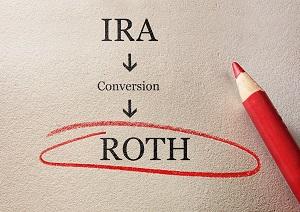
Roth Conversions: A Potential Silver Lining in the Pandemic Cloud
If you have funds in a traditional, rollover, or SEP IRA, now may be a good time to consider a Roth conversion, especially if your 2020 income will be lower than normal.
Here is a brief overview of how Roth IRAs compare to non-Roth IRAs. For Roth IRAs, contributions are funded from after-tax dollars, and withdrawals are tax-free, with no required minimum distribution (RMD) starting at age 72. For non-Roth IRAs, contributions are usually pre-tax (i.e., tax-deductible as an above-the-line deduction), and withdrawals are taxed at the owner’s marginal tax rate at the time of withdrawal, with RMDs beginning at age 72.
A Roth conversion entails the transfer of funds (either cash or securities) from a non-Roth IRA to a Roth IRA. With one exception, Uncle Sam will treat it as a fully taxable event in which you will pay your federal and state marginal tax rates, and it may even move you up to the next bracket. Thus, it should be done only with careful consideration. Ideally, you would want to have a source of funds in a taxable account to pay the resulting taxes from a conversion. The exception referenced above occurs when you have a basis in your non-Roth IRA which would result from a non-deductible contribution. In that case, part or all of the conversion may not be taxable.
When does a Roth conversion make sense? The obvious argument in favor is when you anticipate being in a higher tax bracket in retirement. Before you say that’s impossible, please consider that today’s tax rates are scheduled to revert to 2017 levels in 2025, unless both houses of Congress act in concert with the President, which is appearing increasingly unlikely by the day. Also consider the very high deficits that have encumbered the federal government in response to the pandemic. Avoidance of RMDs can also provide a significant tax benefit. Please note that Roth 401(k) accounts have RMDs, but they can be circumvented by a rollover into a Roth IRA.
In addition to the tax benefits, there is also a significant estate planning advantage in that the heirs are not taxed on the withdrawals from an inherited Roth IRA, but (with certain exceptions) they will be required to withdraw all funds within a ten year period. Normally, the optimal strategy will be to wait until the end of the ten year period to withdraw all of the funds.
Can a Roth conversion be reversed (recharacterized)? A provision of the Tax Cut and Jobs Act ended the practice of recharacterizing Roth conversions, so it is crucial to be certain of the decision to convert.
Is there a limit to the number of Roth conversions that may be completed during the year? No, and it may make sense to dollar-cost-average the conversions perhaps monthly. In fact, for new wealth management clients who come to us with a large amount of cash, we may advise dollar-cost-averaging into the market over a twelve-month period. In times of great uncertainty, dollar-cost-averaging can alleviate the stress associated with taking a sudden large position in the market that has been buffeted by high volatility.
If we can be of assistance to you in deciding whether and how much to convert to a Roth IRA, please do not hesitate to reach out to us at advisors@clarityca.com.

